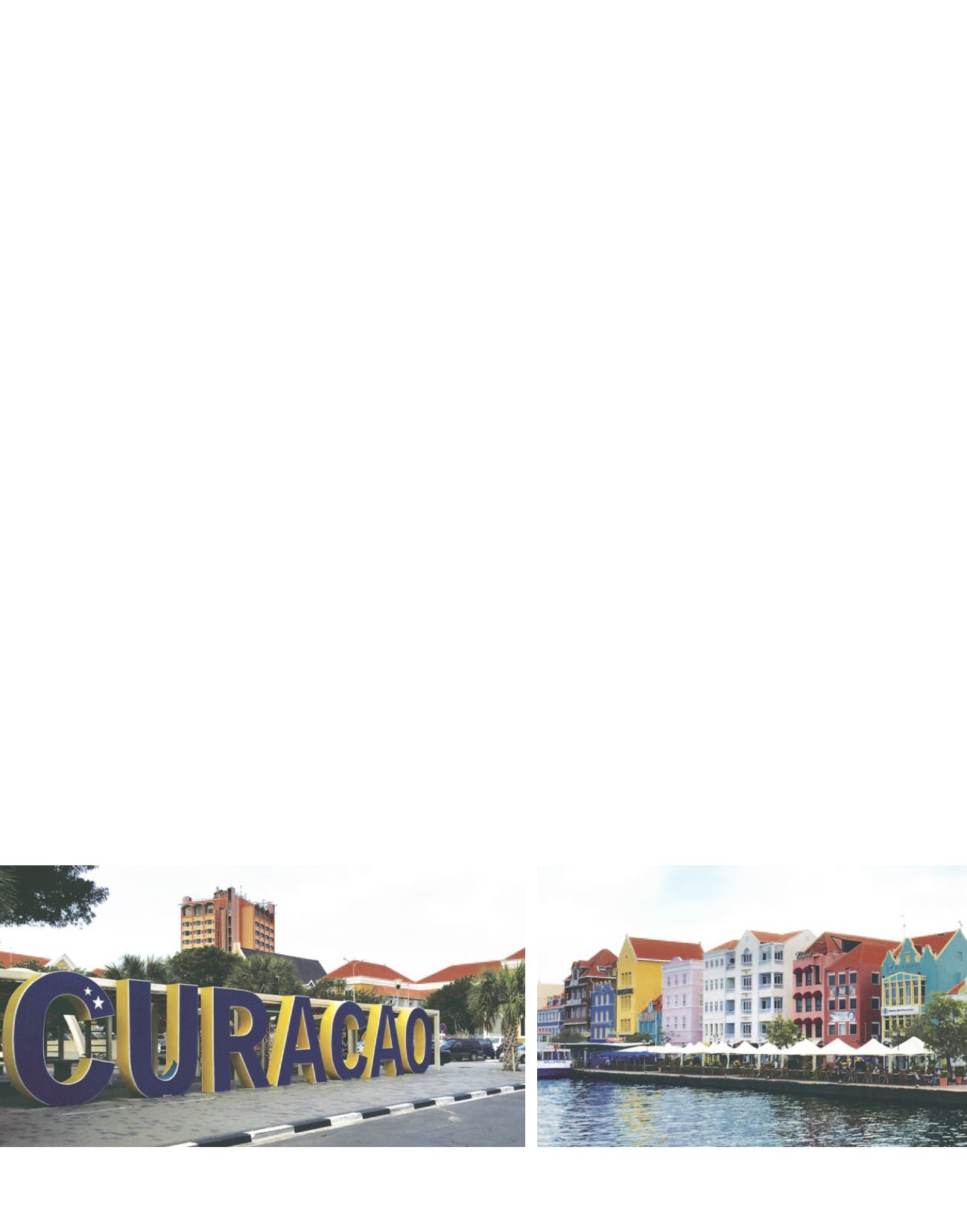

46
INTERVAL WORLD
■
Fall 2015 IntervalWorld.com
Having experienced some of the island’s history on a plate, the
next day I venture to the Museum Kurá Hulanda to learn about
Curaçao’s diverse roots and colorful past. The museum is set within
an eight-block historic district in downtown Willemstad, in which
lodging, restaurants, bars, and gardens share space with restored
Dutch colonial buildings. Walking along the meandering cobblestone
lanes that open to courtyards, complete with bubbling fountains and
outdoor cafes, I forget for a second that I’m in the Caribbean and
not in some tiny village in the Netherlands. After a latte and a crois-
sant, I head inside the anthropological museum, where a handful of
somber exhibits feature artifacts and chronicles of the African slave
trade. Elsewhere, there are fine examples of Mesopotamian relics,
pre-Columbian gold, and Antillean art. When I step outside again,
the midday sun is blinding and the rays are beating harshly on my
back. So I do the only logical thing: Hit the beach. The island claims
to have 38 beaches, and I start with one of its most popular.
Mambo Beach is the kind of sandy spot you go to when you
want to sunbathe in style. All along the powder-soft sand are
lounger beds and even a swimming pool. A few steps back from
the cerulean sea is an open-air shopping mall where boutiques fea-
ture chic fashions, beachwear, and accessories by both Caribbean
and international designers. Between the shopping, the food, and
the dancing on the beach to the Latin rhythms of a local band, it’s
well past midnight before I realize it.
In the morning, I wake up more sunburned than expected and
decide to skip the beach. As it turns out, there are plenty of options
for those seeking something a little different. Riding ostriches at a
farm? Check. Photographing flamingos? Check. Wine tasting?
Check. About 30 minutes northwest of Willemstad is an area called
Jan Kok, where the shallow salty waters of a lagoon attract hun-
dreds of flamingos that come here to feed on brine shrimp and
algae. Viewing these long-legged ballerinas en masse is a beautiful
sight, but without a telephoto lens, snapping a picture turns out to
be challenging — the shy pink birds wander farther into the salt
pan the closer I inch toward them. I give up and get back in the
car for the 20-minute ride to Shete Boka National Park, a wave-
exposed coastline that sits at the bottom of Curaçao’s highest
peak, Christoffelberg.
Though the name of the park translates to Seven Bays, there
are apparently 10 of them and four that can be easily hiked. I park
at the gate and walk the dirt road to the top of limestone bluffs,
which have been carved over the centuries by the pounding force
of huge waves. The contrast between the dark blue sea, the black-
ened limestone, and the white, crashing waves is spectacular. This,
I think again, is unlike anything else I’ve experienced in the
Caribbean. Staring at the sea makes me thirsty, so on the drive
back to the city center I stop at a
batido
stand.
Batidos are the island’s version of a smoothie, and the perfect
beverage on hot days. (Is there any other type in Curaçao?) The
woman behind the counter blends mine with coconut milk, guava,
passion fruit, and a bunch of other exotic fruits I’ve never tasted
before. I pair my batido with a
pastechi
, a popular fried street food
stuffed with cheese, ham, or chicken. It reminds me of an empanada.
Later I stop at Curaçao Winery, the first vineyard on the island.
One of the owners, Hermien Visscher, leads me inside the winery’s
pretty mustard-colored house, past a sitting room and tasting area
to the back, where her family has more than 2,000 plants growing
on two acres of land. The Visscher family comes from a strong
winemaking tradition in the Netherlands, and they’ve hired German
winemaker Lukas Pospiszyl, who is optimistic about the project.
“We’ve consulted with experts from South America and
Europe,” says Pospiszyl. “We’ve done the research, and the con-
clusion is that the soil on Curaçao is very fertile and suitable for
growing crops.” They’ve planted a number of varietals, including
sauvignon blanc, cabernet, and tempranillo. “It’s a gamble, of
course,” says Pospiszyl. “We just planted everything to see what
would grow. So far it looks like tempranillo is doing quite well.”
They’re hoping to start harvesting later this year. Until then, visitors
like me can taste some whites and reds from the family’s
Netherlands vineyard.
That night for dinner I head to Shore, arguably the best restaurant
on the island. Standing in the kitchen, I spot chef Heinrich Hortencia,
Hein van den Heuvel/Corbis/Glow Images



















